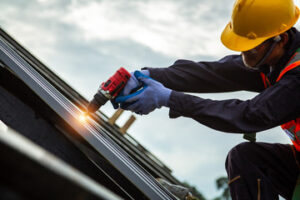Link Juice is the value a page passes on to other pages within your site. It’s determined by the number and quality of links, as well as the placement of those links. Links embedded in the content of a page carry more weight than those in the footer or sidebar.

Link juice is a critical factor in SEO, as it influences how search engines rank websites. It’s an indication that a website is relevant and trustworthy, and it’s based on the number of high-quality backlinks. In addition, a higher-quality link is more likely to be clicked by visitors. This improves a page’s visibility and boosts its SERP ranking. Various techniques are used to build quality links, including identifying opportunities for organic link building and leveraging social media platforms to promote content.
External link building involves acquiring links from other websites, particularly those that have high-authority and are relevant to your topic. This can be done through outreach, guest posting, and other tactics. However, it’s important to avoid buying low-quality links, as these can damage your SEO and increase your risk of a Google penalty.
When a site’s pages receive a lot of link juice, it’s a good indicator that the links are of high-quality and have been placed strategically. Link juice is also influenced by the amount of outgoing links and the authority of the linking page. Links from sites with a high domain authority tend to pass more link juice, while newer and less authoritative websites may not pass as much.
The location of the link is another factor. Links embedded within the main content of a page carry more value than those in the footer or sidebar. This is because they are considered more contextually relevant and offer greater SEO value. Moreover, links that are close in anchor text also hold more value than those that are far apart. Nonetheless, anchor text should be varied and natural to prevent overusing certain types of keywords, which can result in a penalty from search engines.
It’s important to create content that’s worthy of a link from a high-authority website. This means creating content that’s interesting, valuable, and engaging to your audience. For example, if you have a listicle, consider expanding it to include more examples or details. This will make it more appealing to readers and bloggers, and will help you earn a link from a reputable source.
Internal linking
In a world of link building and SEO strategy, it is easy to overlook the importance of internal linking. Internal links serve to distribute “link juice” or authority throughout a website, increasing the ranking potential of individual pages and the overall domain strength. They also help guide your audience to additional content on your site, reducing bounce rates and encouraging visitors to stay longer. However, when executed poorly, internal links can do more harm than good.
One of the most important aspects of a successful internal linking SEO strategy is understanding how to maximize the value of your existing content. This can be accomplished by creating topic clusters and pillar content. Pillar content is comprehensive material covering broad topics in your niche or industry. It acts as a cornerstone around other content-building topics and is linked to internally with relevant LSI keywords. This method helps search engines see your site as a resource on specific topics and increases overall domain authority.
Link Juice is a term that describes the transfer of authority from a high-authority webpage to a linked page via hyperlinks. This process enhances the ranking potential of the linked page and is a vital component of search engine optimization.
The more authoritative a site is, the higher its PageRank, and the more its links will be influenced by other sites in a search. This gives it a greater chance of ranking higher than a similar site with fewer links. It is also important to note that not all links are equal. Some links are more valuable than others, and these are called ‘DoFollow’ links. DoFollow links pass PageRank to the linked page, while NoFollow links do not. It used to be possible to control the way a site’sculpted’ its link profile by using DoFollow and NoFollow links. This practice is now known as ‘link sculpting’ and was a common technique for promoting certain pages over others.
The best internal linking practices will increase the rank of your important pages without dilution or leaking. The best way to do this is by utilizing the right anchor text and ensuring that all links are relevant to the target page. In addition, internal links should be placed high on the page to reduce bounce rates and boost dwell time.
Topical relevance
When a webpage links to another, it passes a portion of its authority to the linked page. This is called link juice, and it can influence how a site ranks on search engines. However, the amount of link juice a page receives depends on several factors, including the topical relevance of the linking page and the number of outbound links it has. The best way to maximize link juice is to create a strategic internal linking structure that channels it to your most important pages.
A page’s topical relevance reflects the content’s relation to a keyword. The more relevant the content, the higher its topical relevance and the more link juice it will receive. A page with a low topical relevance may rank for some keywords, but will not receive much link juice.
Another factor that influences link juice is the authority of the page that provides it. The authority of a page is determined by its quality, traffic, and engagement metrics. It is also influenced by its backlinks and the authority of the website. A page with a high domain authority will pass more link juice than a page with a lower one.
In addition, the quality of a site’s internal links and the anchor text used in those links can influence how much link juice a page receives. Anchor texts should be varied and natural. Exact-match anchor texts should be avoided as they can decrease a page’s ranking. Using too many exact-match anchor texts can also make your link profile appear unnatural, which can result in a Google penalty.
The best way to distribute link juice throughout your site is by using an internal linking software like LinkStorm. This tool helps SEOs, publishers, and site owners elevate their internal linking campaigns by distributing link juice to relevant web pages. Its unique features, such as its Opportunities Tab, help users prioritize which web pages should receive the most link equity. LinkStorm also offers various pricing plans to meet the needs of different clients. Try it for free today!
Anchor text
When a webpage links to another page, it passes link juice to that page. This link juice can boost a page’s authority and credibility, influencing its search engine performance and rankings. Effectively managing the flow of link juice is important to optimizing SEO strategies.
The anchor text is the word or phrase that appears in a hyperlink, and it informs search engines what the linked page is about. It should be descriptive and relevant, as this will help to maximize the amount of link juice passed. There are several types of anchor texts, including generic keywords (e.g., “click here”) and image alt text (e.g., “click to read more”). In general, keyword-rich anchor texts tend to have a higher quality than generic ones.
A page’s link juice can be distributed to other pages on the same website through internal links, or to other websites through external links. The amount of link juice passed depends on several factors, including the linking page’s authority, the relevance of the linked page, and the number of outbound links on a given page. Moreover, the type of link attribute (dofollow or nofollow) also influences the passing of link juice.
Link Juice is a valuable resource for your website, but you should be careful not to waste it. It is important to build a strong, healthy link profile that is free of spammy links. This will ensure that your site is not penalized by Google and improve your search engine performance.
To make the most of your link juice, consider using a link building tool to analyze your current link structure. Then, focus on obtaining high-quality backlinks from authoritative and contextually relevant websites. You should also focus on implementing internal linking to distribute your link juice throughout your site.
Link juice is like electricity flowing through a wire, and the more links you have, the stronger your website will be. To maximize your SEO performance, you should optimize your link structure and anchor text to avoid being penalized by Google. For example, you should avoid using exact-match anchor texts, as these will appear unnatural to Google and will negatively affect your performance in search results. Similarly, you should avoid cryptic links 2-4 as these will confuse users and could result in poor user experience.


